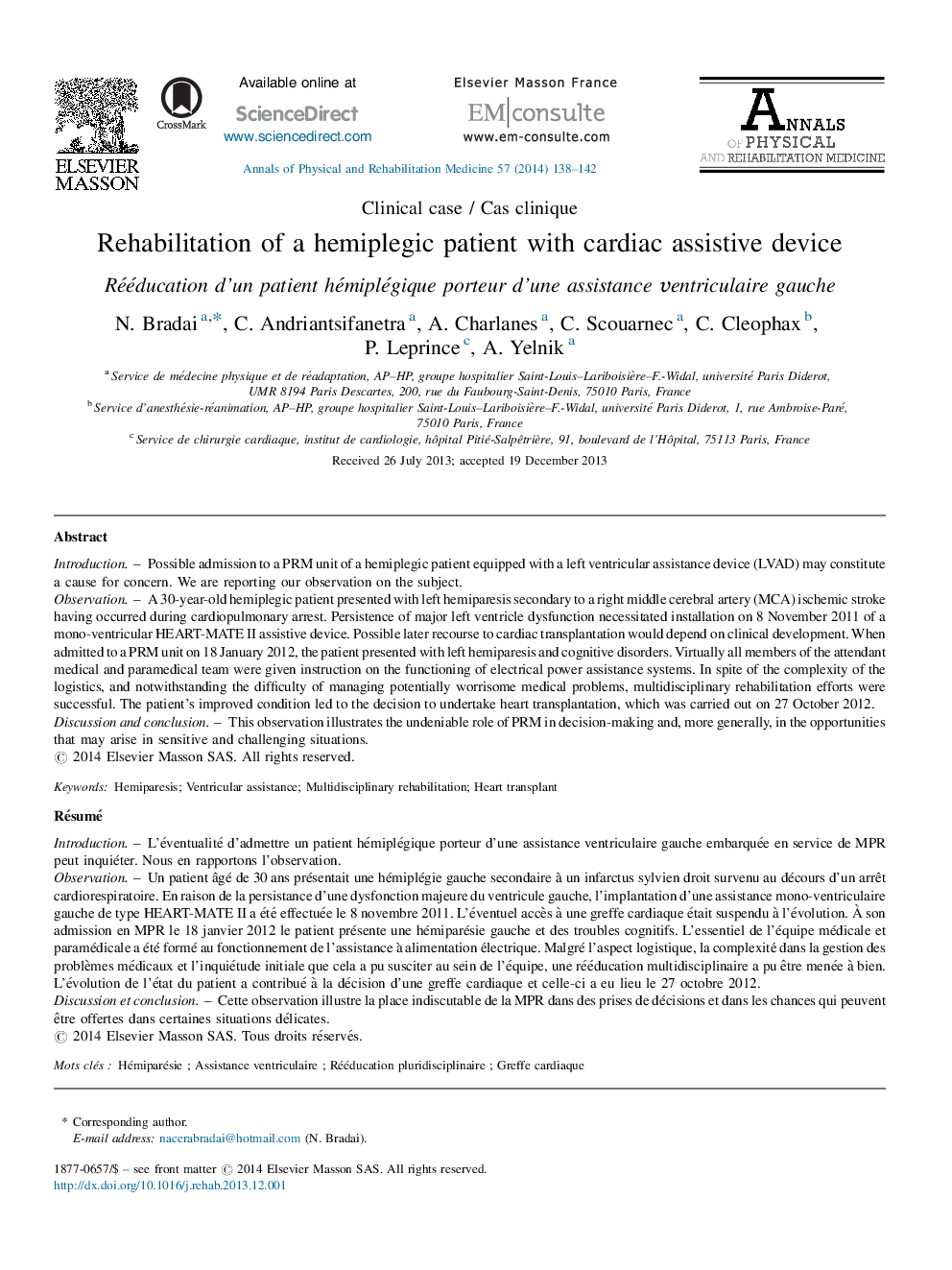| Article ID | Journal | Published Year | Pages | File Type |
|---|---|---|---|---|
| 6204123 | Annals of Physical and Rehabilitation Medicine | 2014 | 5 Pages |
IntroductionPossible admission to a PRM unit of a hemiplegic patient equipped with a left ventricular assistance device (LVAD) may constitute a cause for concern. We are reporting our observation on the subject.ObservationA 30-year-old hemiplegic patient presented with left hemiparesis secondary to a right middle cerebral artery (MCA) ischemic stroke having occurred during cardiopulmonary arrest. Persistence of major left ventricle dysfunction necessitated installation on 8 November 2011 of a mono-ventricular HEART-MATE II assistive device. Possible later recourse to cardiac transplantation would depend on clinical development. When admitted to a PRM unit on 18 January 2012, the patient presented with left hemiparesis and cognitive disorders. Virtually all members of the attendant medical and paramedical team were given instruction on the functioning of electrical power assistance systems. In spite of the complexity of the logistics, and notwithstanding the difficulty of managing potentially worrisome medical problems, multidisciplinary rehabilitation efforts were successful. The patient's improved condition led to the decision to undertake heart transplantation, which was carried out on 27 October 2012.Discussion and conclusionThis observation illustrates the undeniable role of PRM in decision-making and, more generally, in the opportunities that may arise in sensitive and challenging situations.
RésuméIntroductionL'éventualité d'admettre un patient hémiplégique porteur d'une assistance ventriculaire gauche embarquée en service de MPR peut inquiéter. Nous en rapportons l'observation.ObservationUn patient âgé de 30 ans présentait une hémiplégie gauche secondaire à un infarctus sylvien droit survenu au décours d'un arrêt cardiorespiratoire. En raison de la persistance d'une dysfonction majeure du ventricule gauche, l'implantation d'une assistance mono-ventriculaire gauche de type HEART-MATE II a été effectuée le 8 novembre 2011. L'éventuel accès à une greffe cardiaque était suspendu à l'évolution. à son admission en MPR le 18 janvier 2012 le patient présente une hémiparésie gauche et des troubles cognitifs. L'essentiel de l'équipe médicale et paramédicale a été formé au fonctionnement de l'assistance à alimentation électrique. Malgré l'aspect logistique, la complexité dans la gestion des problèmes médicaux et l'inquiétude initiale que cela a pu susciter au sein de l'équipe, une rééducation multidisciplinaire a pu être menée à bien. L'évolution de l'état du patient a contribué à la décision d'une greffe cardiaque et celle-ci a eu lieu le 27 octobre 2012.Discussion et conclusionCette observation illustre la place indiscutable de la MPR dans des prises de décisions et dans les chances qui peuvent être offertes dans certaines situations délicates.
